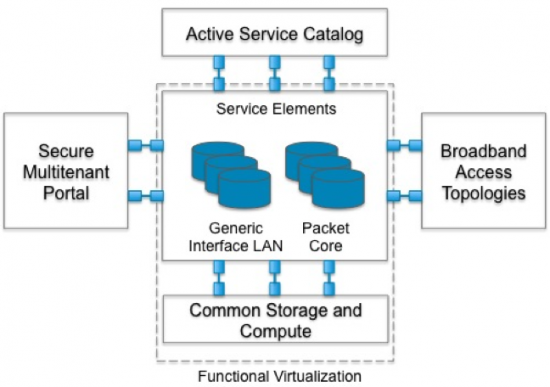































 By Carlos Cordero, Cisco Consulting Services, Service Provider
By Carlos Cordero, Cisco Consulting Services, Service Provider
Cloud consumption models are gaining traction across all company sizes and industries. Whether software as a service (SaaS), infrastructure as a service (IaaS), or platform as a service (PaaS), the value propositions of virtualization are being sought by IT decision makers.
Cisco Consulting Services sees an opportunity for network service providers (SPs) to deliver a similar experience through a new solution architecture that we callnetwork as a service (NaaS).NaaS does for the network what SaaS and IaaS have done for the data center - offering many of the same value proposition components, such as lower OpEx and increased agility, as well as new business model levers and distribution benefits.
A Simple NaaS Architecture Delivers Broad Benefits
To illustrate the value, this paper focuses on NaaS for mobile operators, although similar value could be articulated across all SP segments. Today, the various engineering and operational functions required to enable new customers, new services, and repairs are buried behind monolithic and independent network elements. The goal of NaaS is to simplify the architecture through virtualization, bringing disparate software solutions onto common hardware.
At the heart of mobile NaaS is an intelligent core with the service elements needed to deploy mobile data services (Figure 1). Traditionally, each software element runs on dedicated hardware, but under NaaS, these elements are separated so the software can run on shared virtual machines. The model also includes a common storage and compute infrastructure that can be delivered to the intelligent core as needed through a virtual machine approach. The intelligent core should work across a variety of licensed and unlicensed access technologies, shown at right. The active service catalog represents the SP's ability to create unique service environments by combining service elements in an automated and simplified way. Finally, the secure portal enables consumers and business customers to access and manage their own network instances.
Figure 1. Mobile NaaS Is Anchored in a Flexible and Extensible Set of Service Elements.

Source: Cisco IBSG, 2013
Applying Mobile NaaS to the MVNO Segment
Mobile virtual network operators (MVNOs) illustrate the benefits that NaaS can bring to the mobile network. In the U.S. market, the MVNO space is heating up, driven by a new wave of entrants focused on mobile data solutions, but the real market makers may turn out to be the big brands that are looking to transform their customer experience through mobility.
For example, we may see a voice-over-IP entrant such as Skype build an MVNO business for which it can create differentiation through innovative voice and video services. Media industry players such as Netflix and Hulu want to take control of their streaming offers across the increasingly attractive "third screen." And nontraditional retailers such as Ford and Amazon are looking to extend their customer relationships through mobility. Finally, we can expect consumer electronics manufacturers such as Sony, Nintendo, and Apple to throw their muscle behind mobile to ensure that their devices work as well as they demand.
So, what will these future MVNOs require from mobile operators, and how can mobile NaaS help? First, they need to create service differentiation, and will likely begin experimenting with various combinations of voice and messaging solutions before they find the right mix. Here, NaaS can reduce the cost of failure, while giving operators more flexibility to add service elements where required. For the up-and-coming data MVNO, tighter operational control will be required to ensure that their unique customer experience is being delivered.
MVNOs also will be keenly interested in extracting customer insights through reporting and analytics, and will likely want to segregate their traffic. The greatest interest, however, will come from the unique service environment they can create by adding service elements to enable quality of service, redundancy, parental controls, and video optimization to give customers that "wow" experience.
NaaS Offers Commercial, Operational, and Economic Benefits
NaaS can bring substantial operational benefits, impacting both resource-centric process (such as provisioning, trouble management, and network monitoring), and service-centric processes (such as selling, service configuration and activation, and the planning and delivery of new customer-facing services). There are three sources of benefit:
This is a powerful combination that ultimately benefits OpEx, increases business agility, and drives customer satisfaction.
To learn more, please download our white paper, "Mobile Network as a Service: A New Solution Architecture for Mobile Network Operators."
 Hot Tags :
Service Provider
Mobile
Virtualization
Cisco Consulting Services
MVNO
Network as a Service (NaaS)
mobile virtual network operators
Hot Tags :
Service Provider
Mobile
Virtualization
Cisco Consulting Services
MVNO
Network as a Service (NaaS)
mobile virtual network operators